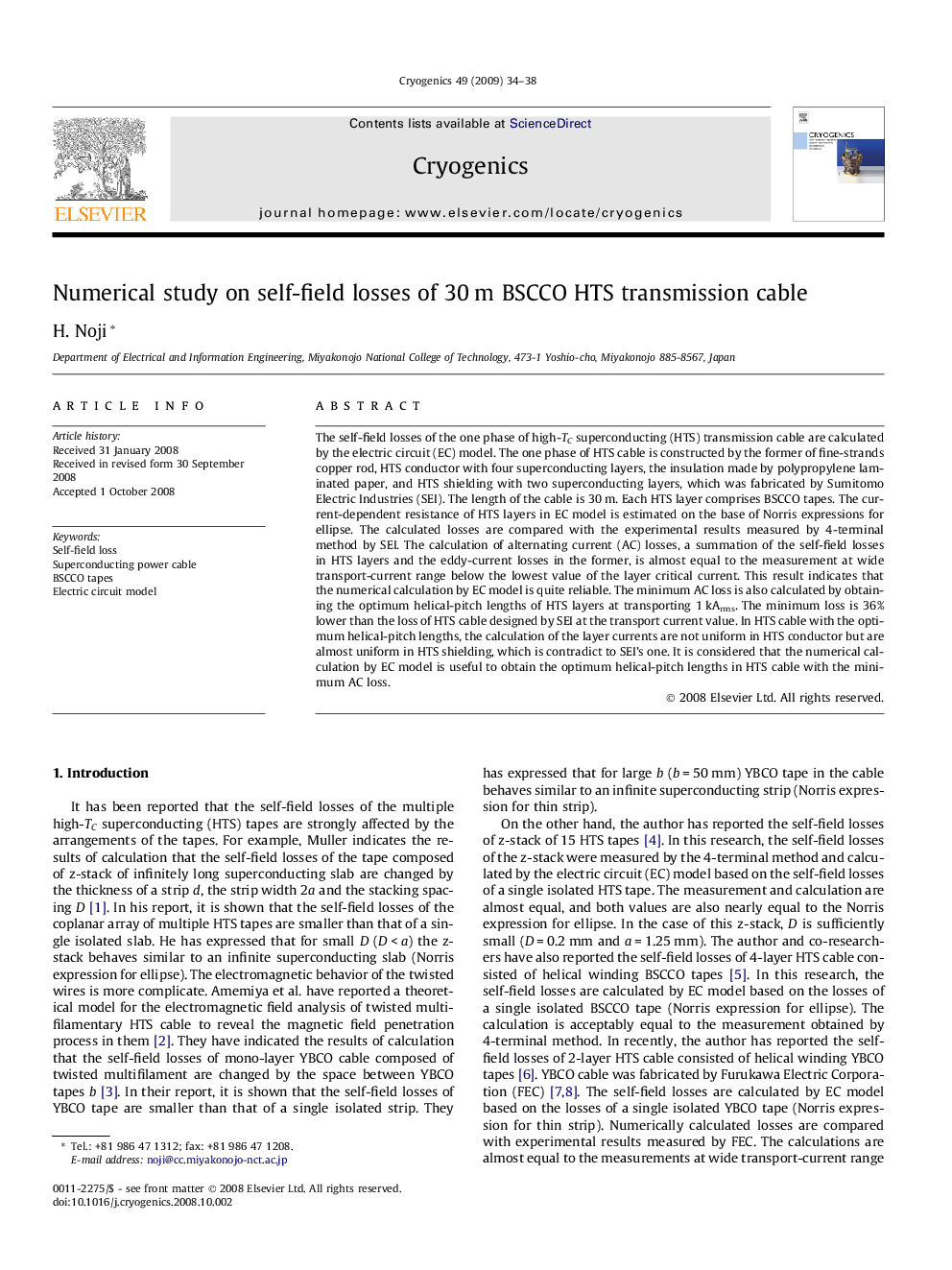| Article ID | Journal | Published Year | Pages | File Type |
|---|---|---|---|---|
| 1508121 | Cryogenics | 2009 | 5 Pages |
Abstract
The self-field losses of the one phase of high-TC superconducting (HTS) transmission cable are calculated by the electric circuit (EC) model. The one phase of HTS cable is constructed by the former of fine-strands copper rod, HTS conductor with four superconducting layers, the insulation made by polypropylene laminated paper, and HTS shielding with two superconducting layers, which was fabricated by Sumitomo Electric Industries (SEI). The length of the cable is 30Â m. Each HTS layer comprises BSCCO tapes. The current-dependent resistance of HTS layers in EC model is estimated on the base of Norris expressions for ellipse. The calculated losses are compared with the experimental results measured by 4-terminal method by SEI. The calculation of alternating current (AC) losses, a summation of the self-field losses in HTS layers and the eddy-current losses in the former, is almost equal to the measurement at wide transport-current range below the lowest value of the layer critical current. This result indicates that the numerical calculation by EC model is quite reliable. The minimum AC loss is also calculated by obtaining the optimum helical-pitch lengths of HTS layers at transporting 1Â kArms. The minimum loss is 36% lower than the loss of HTS cable designed by SEI at the transport current value. In HTS cable with the optimum helical-pitch lengths, the calculation of the layer currents are not uniform in HTS conductor but are almost uniform in HTS shielding, which is contradict to SEI's one. It is considered that the numerical calculation by EC model is useful to obtain the optimum helical-pitch lengths in HTS cable with the minimum AC loss.
Related Topics
Physical Sciences and Engineering
Materials Science
Electronic, Optical and Magnetic Materials
Authors
H. Noji,
